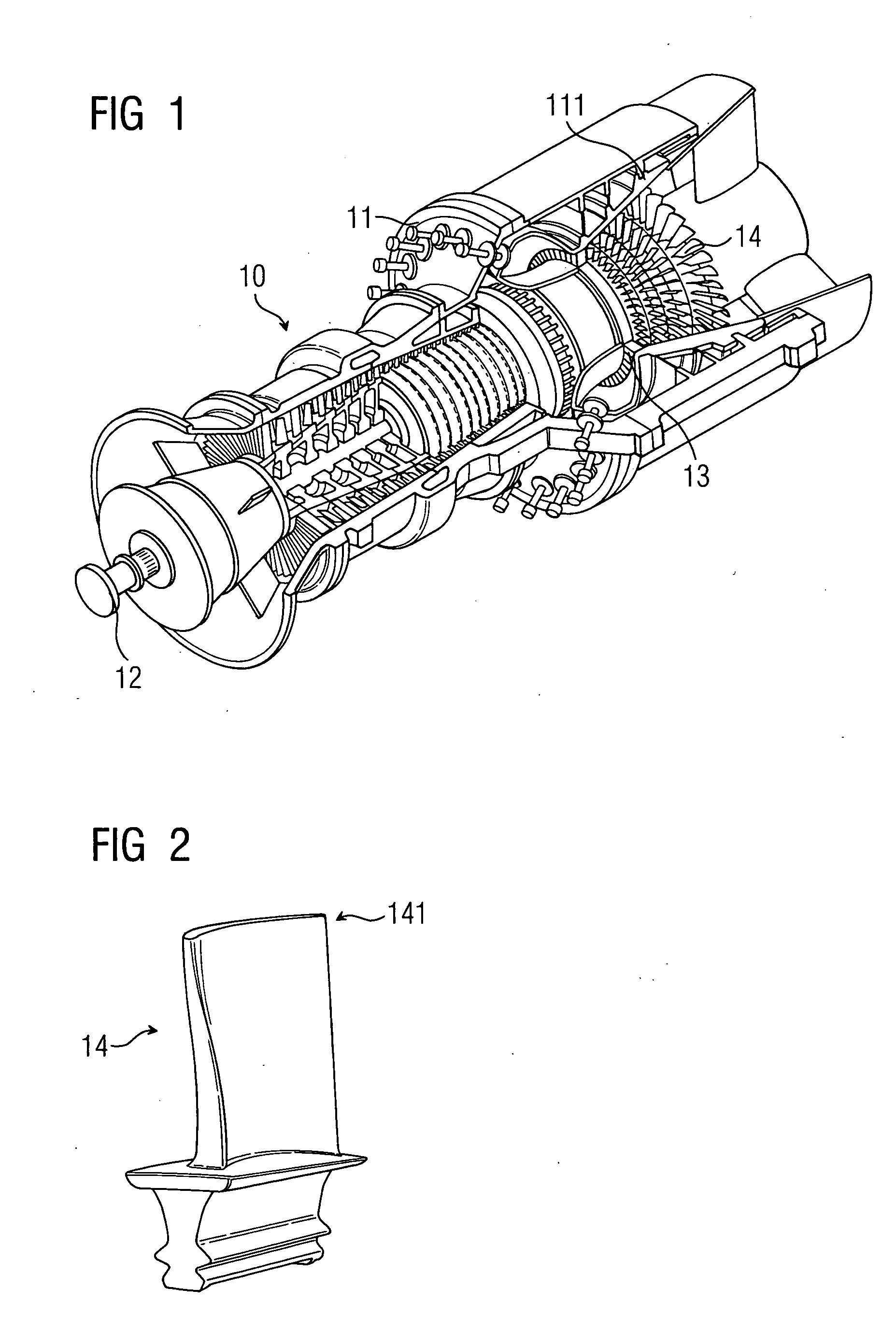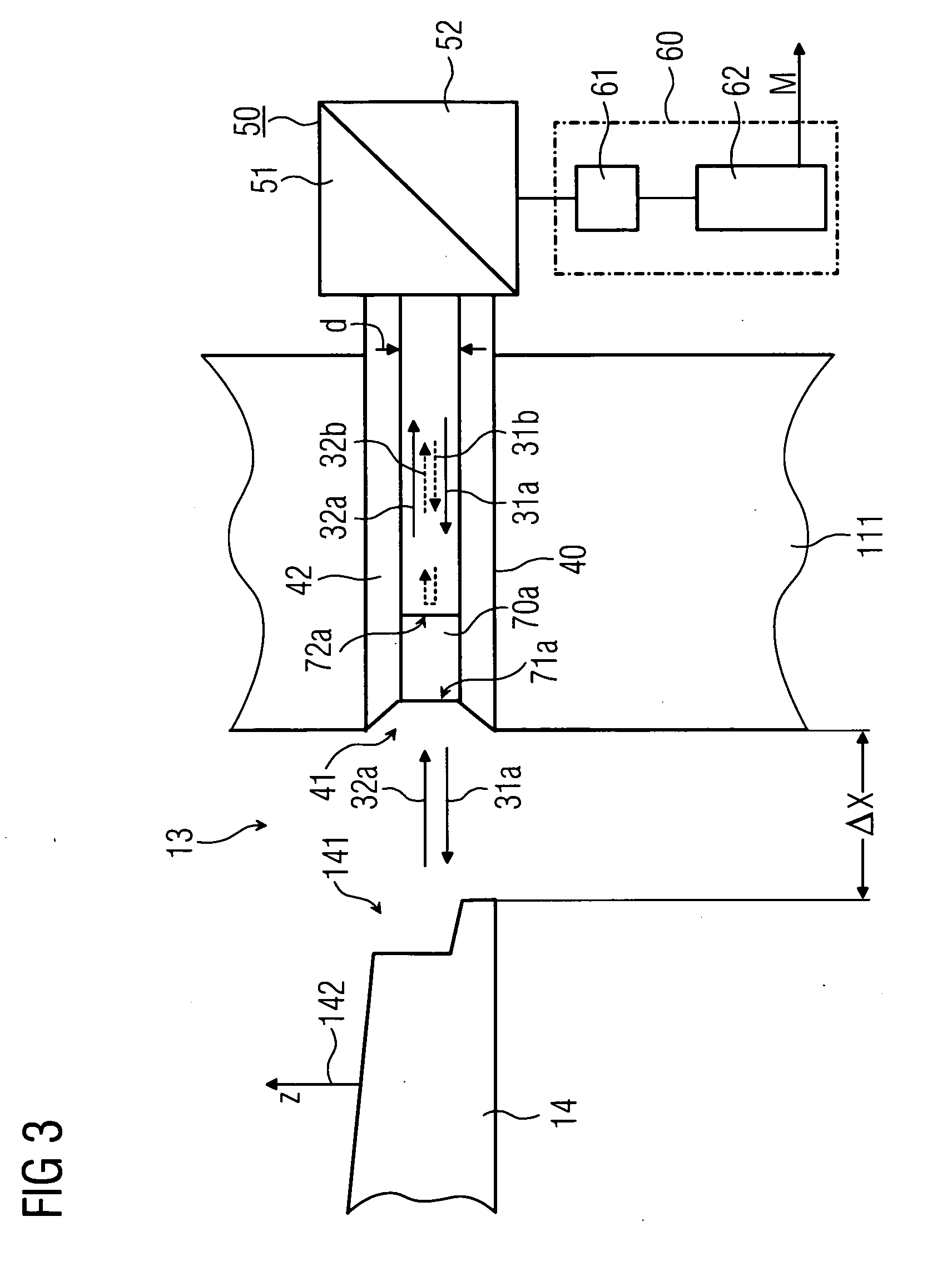Device for determining the distance between a rotor blade and a wall of a turbine engine surrounding the rotor blade
a technology of turbine engine and rotor blade, which is applied in the direction of machines/engines, liquid fuel engines, instruments, etc., can solve the problems of unnecessarily low efficiency, damage to transmitting and receiving units, and limited spatial resolution and service life of sensors, etc., to achieve good temperature stability of sealing elements, reduce the effect of technical overhead, and reduce the cost of operation
- Summary
- Abstract
- Description
- Claims
- Application Information
AI Technical Summary
Benefits of technology
Problems solved by technology
Method used
Image
Examples
Embodiment Construction
[0035]FIG. 1 shows a gas turbine 10 according to the prior art which is designed for a high gas inlet temperature of approximately 1200° C. In a housing 11 comprising an inner wall 111, the gas turbine 10 has a rotatably mounted rotor shaft 12 on which rotor blades 14 are arranged in a flow channel 13.
[0036]FIG. 2 shows a rotor blade 14 of said type in detail in the uninstalled state. In the installed state the upper end of the rotor blade 14, the so-called rotor blade tip 141, faces the inner wall 111 of the gas turbine housing 11.
[0037]FIG. 3 shows a schematic illustration of the inventive device in a first exemplary embodiment. For the sake of simplicity, only part of a rotor blade 14 is shown in outline. The arrow 142 indicates that during a distance measurement the rotor blade 14 moves in the direction of the arrow 142 during operation of the gas turbine 10. In a first approximation the movement in the direction of the arrow can be considered as a linear movement in the lateral...
PUM
 Login to View More
Login to View More Abstract
Description
Claims
Application Information
 Login to View More
Login to View More - R&D
- Intellectual Property
- Life Sciences
- Materials
- Tech Scout
- Unparalleled Data Quality
- Higher Quality Content
- 60% Fewer Hallucinations
Browse by: Latest US Patents, China's latest patents, Technical Efficacy Thesaurus, Application Domain, Technology Topic, Popular Technical Reports.
© 2025 PatSnap. All rights reserved.Legal|Privacy policy|Modern Slavery Act Transparency Statement|Sitemap|About US| Contact US: help@patsnap.com



